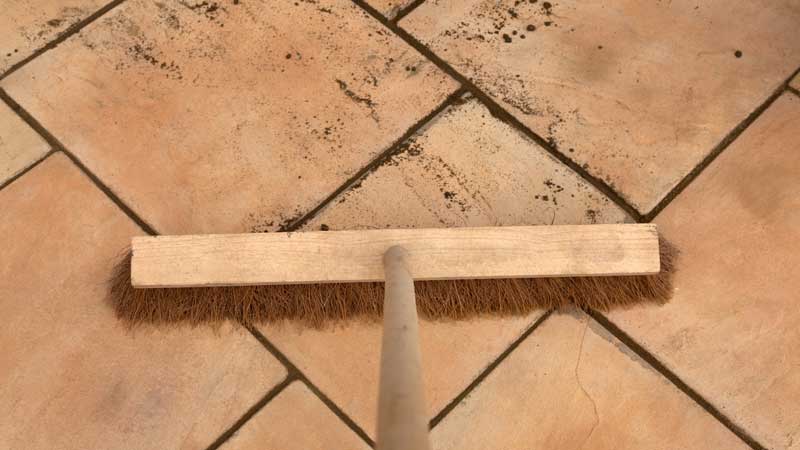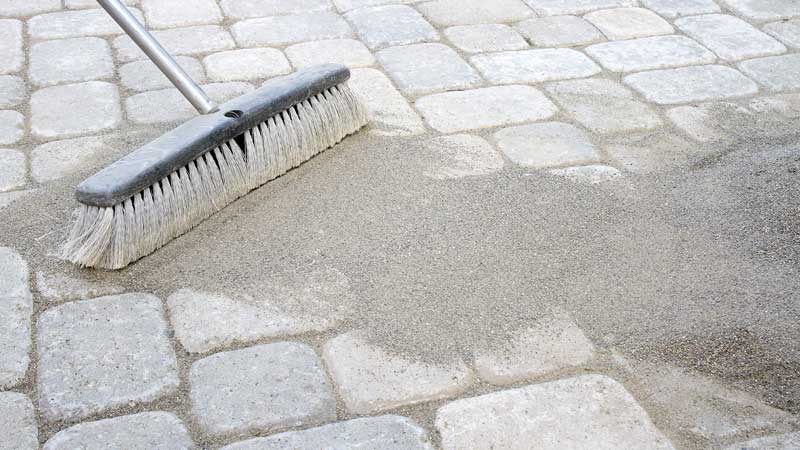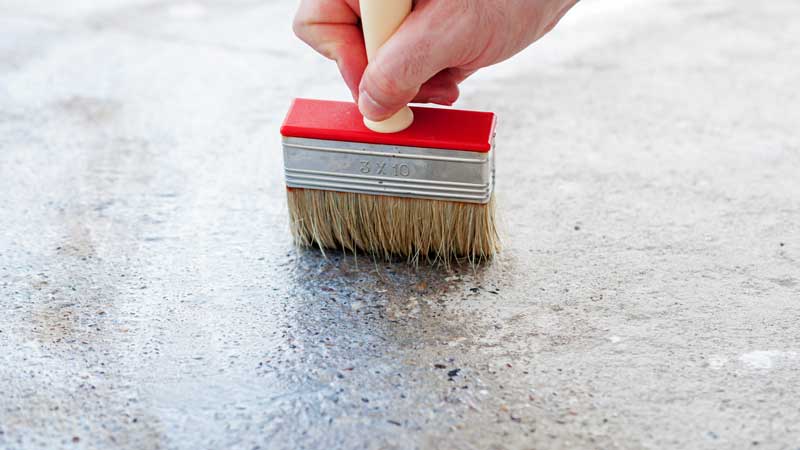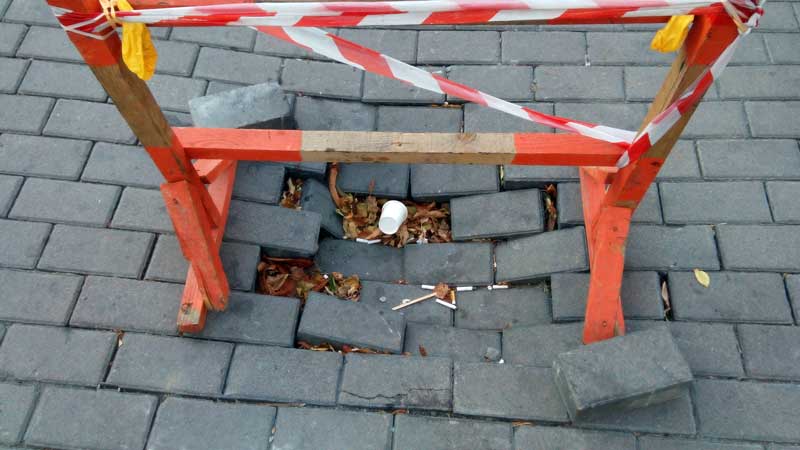Whether they are installed as a traditional patio, a walkway or even a driveway, you may not know how to care for or what modifications you can make to your existing patio pavers. Maybe you purchased a home with an existing paver patio or maybe it has just been a few years since you had them installed. Either way, we answer 5 of the most common questions you have about your existing patio pavers.

1. How do I clean my Patio Pavers?
Your pavers will look great after they’ve first been installed, but just like everything else, they can get dirty and need a little care. Sweeping or blowing the pavers off with a leaf blower is a good way to keep your pavers clean for everyday use. However, if you’ve found you have some stains, mildew or similar problems, then you can take a few extra steps to keep the pavers looking great.
Our best advice is to avoid using a power washer on your pavers. While pavers are made of concrete, they’ve been created in a way that gives them a smoother outer finish. Using too much pressure with a power washer can actually take very small pieces out of the pavers and make them rougher. These small valleys in the surface of the paver will attract and hold dirt more easily than the original surface. So by cleaning your patio this way, you’re likely to start a cycle that ends in you regularly needing to clean your patio instead of enjoying it.
Instead of getting out the power washer, just get out the garden hose and a spray attachment. Most dirt can be hosed off. If the patio is still dirty, you might need a mild cleanser. There are some professionally available cleaners designed for paver patios, but a white vinegar and water solution, or even dish soap and water do a pretty good job.
- Get the patio wet, and then spray on your choice of cleaners.
- Let the cleaner soak in for a few minutes.
- You can use a push broom for some light scrubbing. Don’t use a wire brush, because it will scratch the surface of the paver.
- Rinse off the pavers and let them dry.
If you run into some tough stains, you might need some special products like a rubber remover to get rid of tire marks or especially around the grill, a grease cleaner.
You can also have your pavers sealed, which can help prevent stains and make cleaning them easier in the future.

2. Can You Drill into Patio Pavers?
The short answer is yes. But…
The reason most people ask about drilling into patio pavers is that they need to install something on top of the pavers. There are a couple things to keep in mind here.
Pavers are held in place by gravity and each other. They are not cemented together, so you cannot anchor something like a gazebo, pool cover or railing by screwing it into a paver. Too much force and the paver will lift out of place.
In most cases there are alternative ways to solve your problem without trying to drill through a concrete paver. For example, you can use decorative flowerpots to create concrete anchors for metal gazebo legs or you may be able to hammer thin stakes in between the pavers to hold it in place. In many cases, it makes more sense to remove a portion of the pavers, install a footing, etc. and then reinstall the pavers around the post or anchor point.
Now, if you still feel like drilling a hole in the paver is the right solution, you’ll need the right equipment. The best tools for drilling holes in any type of concrete are a hammer drill and a special bit designed for concrete. Even with the right equipment, pavers can crack when drilled. Taking your time, use a small bit, and then widen the hole with larger bits until you get to the size hole you need.

3. Can I grout my pavers?
This question is generally asked because the patio or walkway is experiencing some issues. The pavers may be loose or there may be weeds growing up between them. Grout is not the answer. But polymeric sand is and it does essentially the same job as grout does with tiles.
Polymeric sand is fine sand combined with silica or another binding agent that fills the gaps between your pavers tightly. When installed properly, polymeric sand will keep pavers locked in place and also prevent weed growth. It has two large advantages over grout.
Pavers are porous and will soak up grout, which means that you’d have to seal your pavers before grouting them to avoid the grout from staining the paver surface. The sand doesn’t penetrate the paver, so there isn’t any risk of damaging the look of the pavers.
Polymeric sand has some flexibility, much like caulk, it can adjust to expansion and contraction of the pavers. Once hardened, grout is rigid. If you used grout on your patio, it would likely crack.

4. Can you paint or stain patio pavers?
If you are unhappy with the color of your pavers, there are some options. If you feel the color is too muted, but like what they look like when wet, you can have the pavers sealed with a “wet look” sealant. But if the color tones are the problem, then your best bet is staining the pavers with a concrete stain. Because the pavers are permeable, they can be stained similar to wood. There are also special concrete and paver paints available, that might be an option for providing you with a new look for your patio, walkway or driveway.

5. Why are my patio pavers sinking?
The two main reasons that pavers sink are water problems and soil settling.
These are often due to poor installation technique. To prevent sinking, pavers have to be installed on a firm foundation. A thick layer of gravel or crushed rock are compacted and used as this foundation in most paver installations. Driveways require even more foundational preparation so they can carry the weight of vehicles. Drainage also needs to be planned to prevent soil from being washed away below the patio or walkway. If installation isn’t done properly, the ground beneath the pavers may sink and the pavers will move with it.
Occasionally, a water leak or some other unusual issue with the soil can still cause a problem even when the pavers were installed properly. The solution in either case is to remove the pavers, improve the stability of the foundation and reinstall the pavers.

